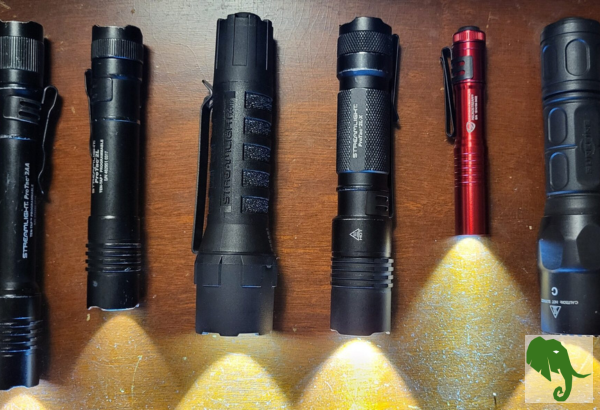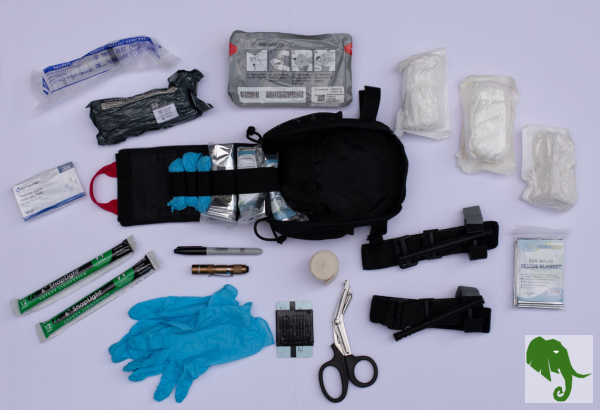
Recent events with Hurricanes Helena and Milton that devastated areas in the Southern United States have proven the need not only to prepare ourselves and families for natural disasters, but also our pets who are almost often considered family. If you’ve paid attention to the news coverage of these historical storms you may have seen videos and pictures of pets stranded and in need of rescue. There are many reasons for this but unfortunately these pets were either left behind, abandoned or separated from their families.
As a pet owner, I often consider my pets within my emergency planning. Like others, I sometimes may miss a few critical steps to ensure they’re as safe and secure as possible. Regardless of the emergency, natural disaster or a house fire, effective preparation for our pets involves more than just good intentions. It requires a solid plan, essential supplies, and readiness for the unexpected. From crafting an emergency plan tailored to your pets’ needs, to building a pet-specific disaster kit, to preparing for possible evacuation, these tips can help keep your pets safe and close, even in the worst conditions.
Create a Plan
Because there are so many variables to consider when creating a plan specifically for your pet in times of an emergency it is a good idea to create a checklist well before the time it may be needed. As your life changes and your pets may change, be sure to update your checklist and your plan accordingly. The type of pet you have should be the basis of your plan. Dogs and cats will have different needs than birds or reptiles. Livestock should also be considered and may need a more comprehensive plan for their safety. Your intent or ability to evacuate will determine your pet’s evacuation readiness.
When planning for your pet’s safety, it’s essential to consider their specific requirements based on their species, size, breed, and temperament. For example, a toy poodle may require only a compact carrier, while a Great Dane will need a larger crate. Potentially you may need more supplies, more space, and specific transportation arrangements. Birds, reptiles, and livestock each come with their own needs, from safe enclosures to specialized food and temperature control. Your intent to either shelter in place or evacuate will also shape the plan you create. You need to ensure your pets are prepared for any situation.
Staying Informed
Staying informed is essential to any emergency plan. Be prepared for potential power outages and limited cellular coverage by including a reliable communication tool. A weather radio with solar or hand-crank operation will help you stay updated on critical information, keeping you ready to react to changing conditions.
Be sure to check your radio and any other gear in your kit regularly. Setting a day at least every six months to test and refresh your supplies is a good practice to ensure everything is in working order when you need it most.
What is most important is that you take the time to create a plan as soon as possible. You never know when disaster may come and a well thought out plan can make a big difference on how you make it through your emergency.
Build an Emergency Kit
If you’re someone who values preparedness, you likely already have a bug-out bag or survival kit ready for emergencies. The same level of care should apply to preparing an emergency kit specifically for your pet. Plan for at least five days’ worth of supplies to cover your pet’s basic and unique needs.
Start with essentials: food, water, and any medications your pet may require. Along with these, gather pet identification details like microchip information, collar tags, recent photos, and copies of vital medical records. This information can be invaluable if you and your pet become separated. Be sure to pack a pet first aid kit, as well as contact information for your vet, local animal shelters, and emergency veterinary clinics in case you need them.
Travel
For comfort and safety during travel, include appropriate carriers, leashes, or harnesses. If your pet isn’t used to being in a carrier or crate, begin practicing ahead of time so they can become comfortable with it. This is especially crucial for cats, small dogs, or animals that don’t often travel. Consider adding familiar items like a favorite toy, blanket, or bed to ease their stress in a new environment.
You should be prepared for cleanup of waste by packing waste bags for dogs and disposable litter and trays for cats. With a well-stocked emergency kit, you’ll be ready to keep your pet safe, healthy, and calm, even in the most unpredictable situations.
If you own a reptile, be sure to include a heat source, like a battery-operated heat lamp or blanket, to keep them warm. For pets like birds, hamsters, or gerbils, having an extra cover for their cage can help keep them calm and protected during the disruption.
Your emergency kit should be prepared to support both sheltering in place and evacuating with your pet, ensuring you’re ready for any situation.
Conclusion
Disasters don’t just disrupt our lives, they profoundly affect our pets, too. Animals are creatures of habit, and the chaos of a disaster can led to significant anxiety. As a pet owner, one of the best things you can do in the aftermath of an emergency is to help your pets return to a sense of normalcy as soon as possible. Try to recreate familiar routines, provide comforting items like their favorite toys, and offer a safe, quiet space for them to recover.
Preparing yourself and your pet for emergencies is not a one-time effort but an ongoing process. By following the basic guidelines in this article, creating a plan, assembling an emergency kit, and preparing for communication challenges, you’re taking the first steps in protecting your pet from the unexpected. But remember, these tips are only the beginning. There are a number of resources dedicated to pet emergency preparedness that can help you dive deeper into creating a thorough, customized plan.
For more detailed information and guidance, visit resources like Ready.gov and FEMA. These organizations provide extensive information to help ensure you, your family, and your pets are as ready as possible for any emergency. Taking the time now to plan can make all the difference when disaster strikes, ensuring you and your pets stay safe, calm, and together.
Related content

Winter is Coming: Preparing Your Home for the Cold
This past Sunday was the first day of fall. Department stores are putting away their summer items as the summer season has ended. Soon the …

The Importance of Carrying a Flashlight
In any situation, having the ability to see clearly can mean the difference between life and death. This is especially true in low-light environments …

Building a Comprehensive Trauma Kit for Emergencies
In times of crisis or accidents, being equipped with the right tools can make the difference between life and death. Whether you’re out in the …

Read other OwnGuard Solutions blog posts
Read our other posts centered around being safer and better prepared.

